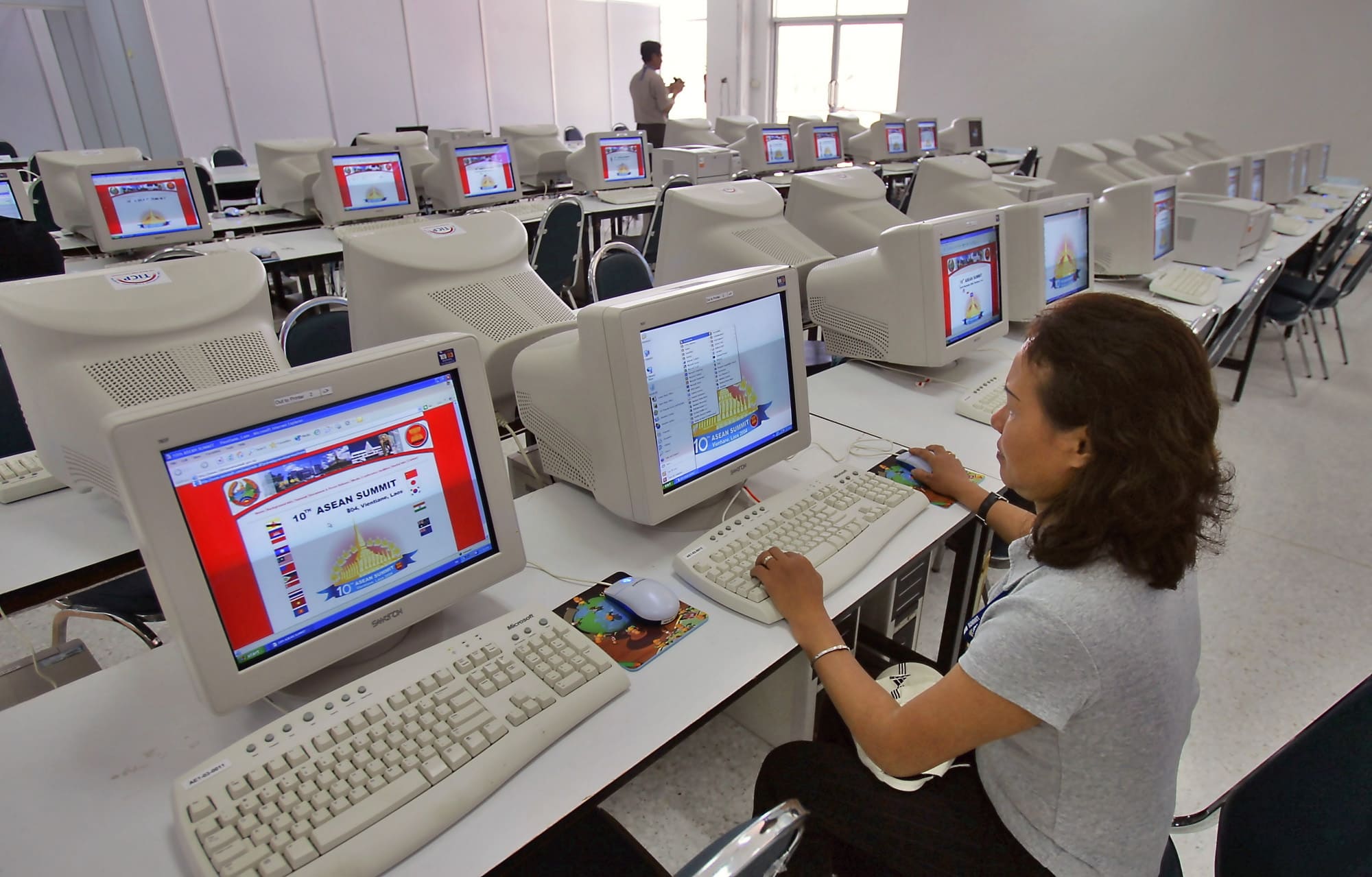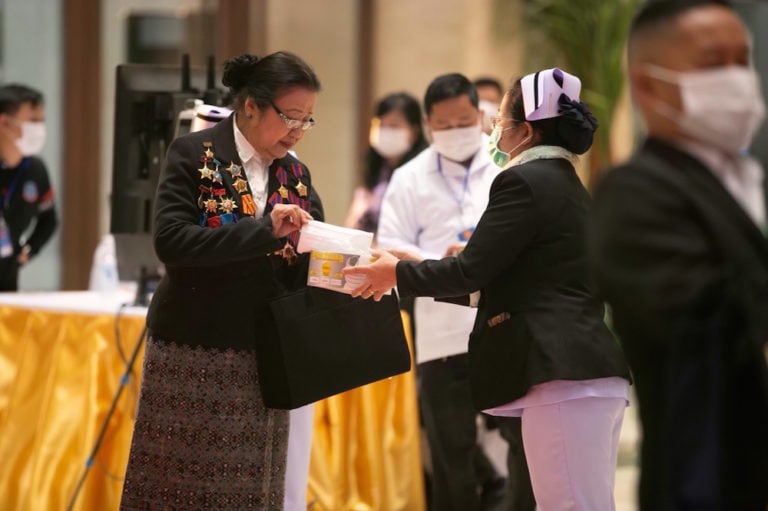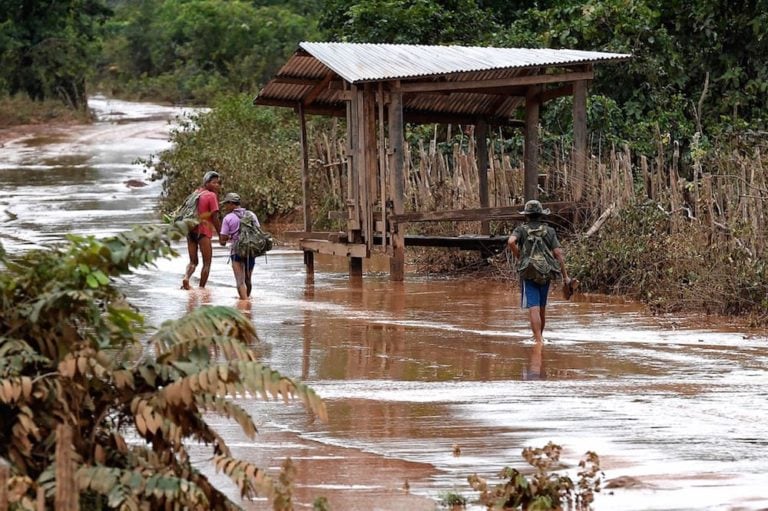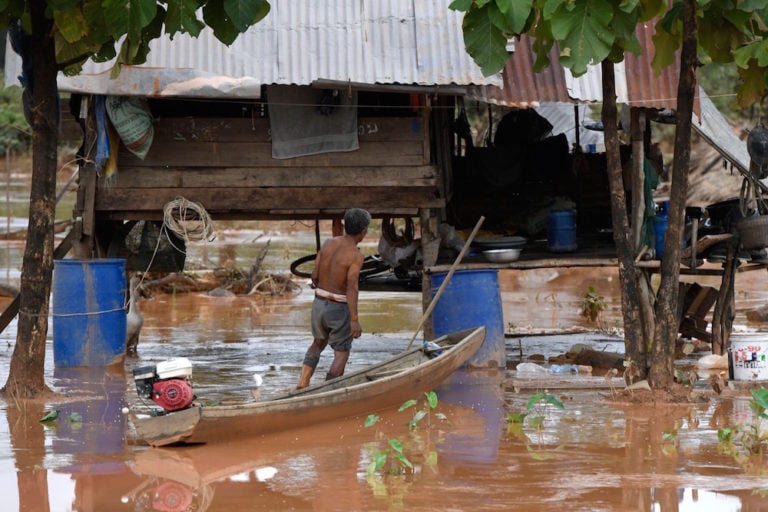Freedom of expression in Laos slid further down in 2014 with the adoption of a series of measures aimed at tightening control over the media or curbing growing criticism over social media against the ruling party and the government.
This report was originally published on seapa.org on 5 May 2015.
Freedom of expression and freedom of the media in 2014 on Lao PDR has slid further down with the adoption of a series of measures, including laws and decrees aimed at either tightening control over the media or curbing growing criticism over social media against the ruling People’s Revolutionary Party and the government.
Where is Sombath?
The chilling effect of the enforced disappearance of prominent development worker Sombath Somphone since 15 December 2012 further stifled free expression among the civil society community in Laos since the case has not been resolved.
The government’s obduracy to inquiries by regional and international rights and donor communities for accountability and progress in its investigation into Sombath’s case has reverberations to efforts among media and human rights advocacy groups in Southeast Asia to combat impunity for crimes against human rights and freedom of speech.
Impunity for crimes against the right to free expression, and for enforced disappearances of political dissidents, is not new to Laos and the rest of ASEAN members. However, the Laos government is making a deliberate attempt to cover up Sombath’s high-profile case by not making any credible information known to the public, and by further discrediting human rights groups that try to cast light into the darkness clouding over the case.
Sombath’s disappearance undermined the ASEAN Declaration on Human Rights (ADHR) adopted by leaders of ASEAN countries merely weeks before the abduction took place. The absence of any collective response from ASEAN, including the ASEAN Intergovernmental Commission on Human Rights (AICHR), has effectively demonstrated that the regional body operates on the lowest common denominator with regards to human rights.
In December 2014, 82 regional and international right advocacy groups also urged ASEAN leaders to intervene on the case, since Sombath is regarded an ASEAN citizen and his case has amplified the magnitude of the problem of enforced disappearance of right activists and critics of the member governments in ASEAN.
The lack of independent media and the subdued voice of the Lao civil society community to raise alarm over issues surrounding his case has also effectively crippled the public access to information, which is critical to the promotion and protection of human rights Laos has committed under ASEAN and UN standards.
Over the past year, several regional and international intergovernmental, human rights advocacy groups and donor agencies including the European Parliament and the ASEAN Parliamentarian Commission on Human Rights (APCHR) have used varying strategies, including funding pressure, to urge the Laotian government to help resolve Sombath’s case.
The UN Human Rights Council’s second round of its Universal Periodic Review for Laos in January 2015 strongly recommended for an independent body to investigate the enforced disappearance, in addition to other calls for the government to improve human rights situation and implement international human rights instruments it already ratified.
In the country, however, the local media only published the quotes of the official response of the government delegation, headed by Pongsawat Bhupha, a minister to the President’s Office, that said government respected international principle of human rights and provide guarantees of basic rights to its people.
The climate of censorship and self-censorship in the media and the CSO community is indicative of Laos’ continuing repression against critics of the Party and the State, especially on sensitive issues such as high-level corruption, land concessions and environmental problems.
Rules for civil society
The government last year was preparing to streamline two laws governing local and international non-governmental community development organizations operating in Laos toward stricter control over their operation, type of activities and funding among the community.
Non-governmental organizations (NGO is a term used in Laos to refer to foreign groups) and local non-profit associations (NPA is the term used for local organizations) in Laos have played an important role in raising voice of Laos’ fledgling civil society community, especially in the rural areas. They have spearheaded an open discussion and engaged in dialogues with the government on issues related to policy direction and impacts of social and economic development on human rights and environment.
The state’s overtures towards civil society has reversed after the 2012 Asia-Europe meetings in Laos which hosted unprecedented engagement of the CSOs in the country with the government. The meetings exposed the government and its leaders to direct and sharp international scrutiny in the public , from issues related to land concessions to foreigners, controversial hydropower dam projects and its impact on the environment, and high-level corruption.
The first law on international non-governmental organisations enacted since 2010 will be enforced by issuing implementation guidelines. Among others, the rules require NGOs to obtain an authority of approval for an operating license from the Ministry for Foreign Affairs, making the process of application more complicated and lengthy.
An older law dating back to 2009 on local non-profit associations will be amended to impose restrictions on their ability to receive overseas funding and donations and limit their activities to agriculture, education, public health, sport, science, and humanitarian benefits.
Rights on paper
The protection of civil liberties, the right to assembly and freedom of expression and of media only exist as words in the Lao Constitution. In practice, citizens who exercise those rights can be criminalized, with severe penalties under Article 65 of the Penal Code banning propaganda against the Party or undermining the state authority.
The media law, adopted in 2008 guarantees media rights and access to public records. However, the law itself favors state control over protection of the media. Up to date, the law has not been fully implemented pending issuance of its implementing guidelines.
In practice, current control of the media is more effective through layers of party and state mechanisms imposed directly in the newsrooms and journalist organizations. The Ministry of Information, Culture and Sports is the main mechanism to control flows of news and information, issuing the party and the state’s guidelines for the media through regular news content review meetings with editors of newspapers and broadcast outlets who are appointees of the party.
In response to the changing media landscape and the need to build up professional and technical capacity of the media in Laos to catch up with the rest of the region and the world, Laos recently restructured the Lao Journalists Association (LJA). The recent restructuring gave the group more muscle as the party’s tool handle the media-related issues including professional capacity and ethics. The LJA reportedly expanded the number of vice presidents to seven to handle the growth and diversity of the media. All the seven posts are held by government officials and editors in the state media.
In February 2015, Deputy Prime Minister and Minister of Education and Sports Phankham Viphawan, who is also a politburo member, told the 9th congress of LJA to be the main agency to develop knowledge and skills of Laos journalists to meet foreign counterparts, and to be able to use technology to evenly distribute information to the public and keep them well-informed and ahead especially of activities of “bad elements” operating against the Party abroad.
“All journalists must effectively perform their duty as a sharp mouthpiece of the party” he was quoted in local newspapers as saying.
The 6.5 million-population of Laos currently has 123 newspapers and journals including 11 dailies – all state-owned. There are 37 TV stations including one Vietnamese channel and two Chinese channels, and 57 radio stations including China Radio International, Voice of Vietnam, France Radio and Australia Radio with a combined transmission range covering 80 and 90 per pent of the country, respectively.
Media capacity building
The Ministry of Information, Culture and Tourism is set to expand media coverage to 95 per cent for newpapers and radio and 85 per cent for television by the end of 2015. Laos also set to digitize all airwaves for the whole country during the same period.
Chinese and Vietnamese investment and assistance have spearheaded efforts to expedite the development of media and telecommunication infrastructure. China mainly invested in satellite communication and under a joint information technology development cooperation, including a 254 million USD loan for Lao Star, the country’s first satellite.
Lao Star is set to serve 22 signal channels in order to ease flow of information increasingly demanded by the booming trade and investment sectors. This first satellite is due to be launched into the orbit by November 2015, to mark the 40th anniversary of the communist nation. A second satellite with 36 signal channels has been planned with a 950-million-USD joint investment between the Lao government and a private Chinese telecommunication company.
Observers noted that said with the two satellites in orbit by 2018, Laos will have more control of information coming in and out of the country, instead of relying on Thai and foreign satellites at present.
Meanwhile, Vietnam mainly helps train Lao human resources in the media sector to boost their capacity and quality to cover and report regional and global news, and also to report on performance and activities of party and government leaders in order to keep the public informed as broadly as possible.
Internet control tightened
The number of social media users in Laos has increased rapidly after the introduction in 2010 in the 3G mobile communication system, later raised to 4G in 2012. Mobile phone users jumped to 4.3 million, or 65 per cent of the country’s population. At the end of 2014, Laos has more than 1 million social media users.
The state’s moves to control the online expression especially in social media came about in response to a rash of false information and photos posted on Facebook about the country’s worst air crash in late 2013.
On 16 September 2014, Prime Minister Thongsing Thammavong issued Decree No. 327, which permits authorities to monitor and prevent information that threatens social order and national security. The decree makes online offences punishable under the Penal Code provisions, including prohibitions for spreading untrue information aimed at undermining the party and government policies, or content that cause social panic, encourage people to join terrorism, commit crimes and social disorder.
Being applicable online, penal offences in the decree are just broad and vague enough to criminalize even constructive online criticism of the party and the government, whether it is made by netizens, or journalists. For example, clicking “like” on Facebook could also mete a criminal charge as it would be seen as supporting online campaigns to undermine solidarity of ethnic communities between nation.
In addition, internet service providers that allow such content could also face the same consequence, especially those that seek to undermine the Party and the State.
During the 8th General Meeting of Laos’ People Assembly in December 2014, Minister of Post and Telecommunication Hiem Phommachanh said the government will impose stricter control over flow of online information including blocking some social media accounts as this platform has increasingly been used negatively and to spread false information. Hiem said online expression includes criticism against the party and propaganda against the party and state leaders that is detrimental the national security.
Since the decree took effect in October, there had been no credible report on the enforcement of these measures given the lack of capable agencies and personnel to police online content.
Earlier, China has helped provide surveillance technology and train a number of Lao staff handling information and communication technology but to what extent the surveillance capability can be effective is not known.
Outlook for 2016
Laos aims for a big year in 2015 when the country celebrates its 40th anniversary under communist rule; and in 2016 for the 9th Lao People’s Revolutionary Party Congress and as chair of ASEAN. These can be both a blessing and a curse for the state as it would present a rare opportunity for the government to showcase economic progress as well as efforts to integrate with the ASEAN community. However, these occasion also provide potent entry points for local and international rights advocacy groups to press for measures to address human rights violations in the country.
Even in the present series of civil society meetings on the ASEAN in Malaysia, the tug of war with the Laotian government has already begun. Civil society groups from both in and outside the country have questioned the Lao representation in the meetings, dominated by government-organised groups.
Questions are likewise being raised on the viability of a free and open civil society meeting in Vientiane next year, when Laos assumes chairmanship of the regional group. Given the experience of Sombath Somphone, who led local NPAs during the Asia-Europe civil society meetings, serious concerns exist over security of local and regional civil society delegates should such a meeting take place next year, since sensitive issues like hydropower projects and land concessions in Laos are sure to be discussed.
Nevertheless, failure to improve its human rights record – including easing restrictions on freedom of expression and solving Sombath’s disappearance – would likely dilute any gain for Laos in its big year since these already impact on much needed foreign assistance for the country’s economic growth and development.
In the final analysis, the ASEAN Economic Community, which formally starts in 2016 under Laos’s ASEAN chairmanship will be tarnished if the governments in the region fail in their collective responsibility to for accountability of all its members.



